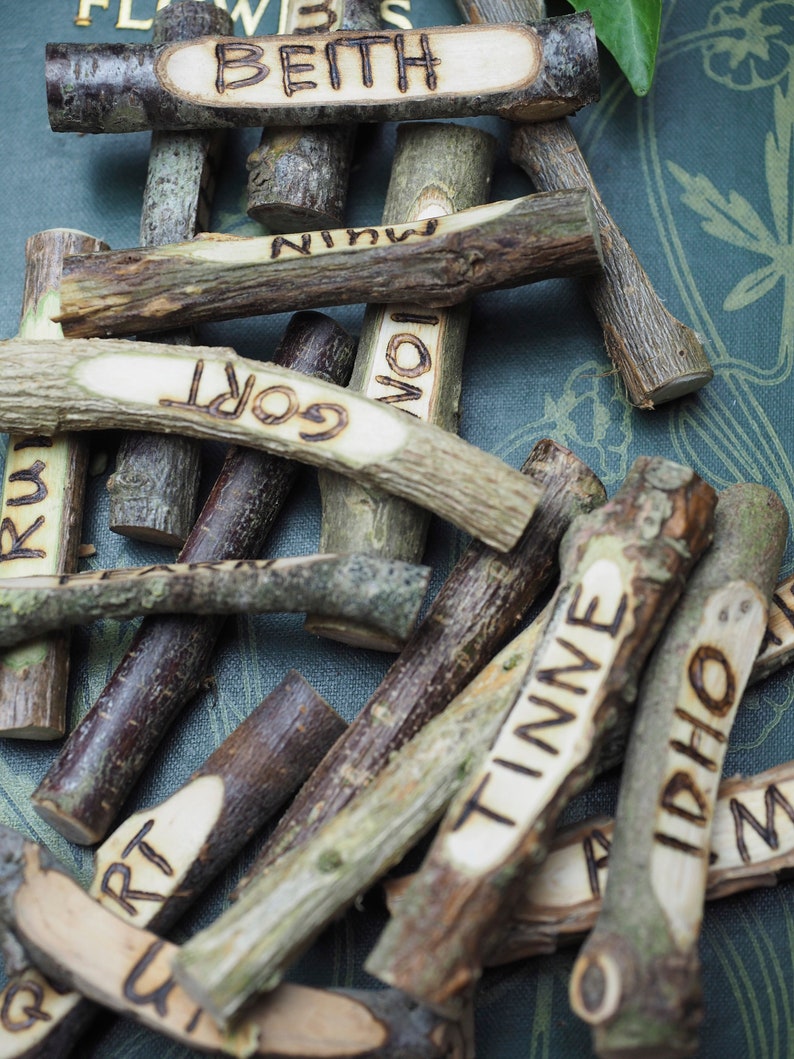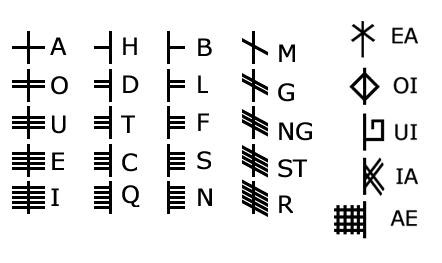

Its new leaves appear before those of any other deciduous tree, and blaze like golden-green flames on the branch tips on sunny days at winter’s end. Indian plum is a small, shrubby tree or bush found along the margins of lowland forests throughout the Puget Sound area. Puget Sound Tree: Indian plum (Osmaronia cerasiformis)
#Ogham fews found on tree branches how to#
Wherever you live, and whatever the trees that grow there, the following notes may be useful as an example of how to ground the Druid mysteries in the deep earth of your own land. There must someday be a cactus-Ogham for the Arizona deserts and a jungle-Ogham for the rain forests of northern Australia. If Druidry is relevant to the whole world, though – and I believe that it is – it must be able to put down roots in forests very different from the ones where it originally grew.

The tree-Ogham that follows should be considered a first, rather exploratory venture in this direction. Inevitably, some meanings are lost, and others are gained which were not present in the original. The process of creating a tree-Ogham appropriate to the Puget Sound country – or any other environment sufficiently different from northwestern Europe - is not unlike that of translating poetry from one language to another. The names of the Ogham letters, or fews as they’re called, are not actually the names of the trees associated with them – thus Beith means not “birch” but “being,” and Straif means not “blackthorn” but “sulphur.” Thus principles other than alphabetic order may be applied for the creation of a local tree-alphabet. The trees, however, are an exception even in Old Irish. Many aspects of the Ogham alphabet resist such reworking, since the Ogham uses initial sounds of words as a patterning system for many of its mnemonic and symbolic uses. If the Ogham tree-alphabet is to be more than an exotic import here, the ancient letters need to find new equivalents among the trees of this very different land. For example, birch, holly and spindle are completely unknown here except where they have been introduced by white settlers, and the Garry oak – our only native oak – is a relatively small, shrubby tree found in a few dry prairie areas, not a mighty lord of the forest like the English oak. The complicated natural history of North America’s northwest coast, shaped by volcanic fire, glacial ice, and the torrential rains of one of the world’s few temperate rain forest environments, has created a unique ecosystem with few parallels in the Old World.Īs a result, some of the traditional Ogham species are not native to this region, and many of those that are native have wholly different roles in the local ecosystem. The Puget Sound area of the Pacific Northwest, where I live and practice Druidry, is nearly a different planet in botanical terms. The tree-Ogham as it has come down to us in modern Druid tradition is a creation of the British Isles, and draws on the trees of that region. ~ Erynn Rowan Laurie, “The Preserving Shrine” (from The Druid Renaissance, ed. Because they are here, now, they speak more clearly to me and with greater power than places half a world away. These things have as much to teach us as the rowan or the Shannon or Mount Snowdon. I live with the Duwamish river and the mountain called Tahoma. I live with cedars and dog-tooth violets, with banana slugs and stellar jays. But it holds many different things as well. It shares many things with the wild lands of my European ancestors wolf and salmon, oak and eagle.

All rights reserved.īecause I live in North America, my wilderness is not that of the Irish Iron Age, or the forests and mountains of modern Wales.


 0 kommentar(er)
0 kommentar(er)
